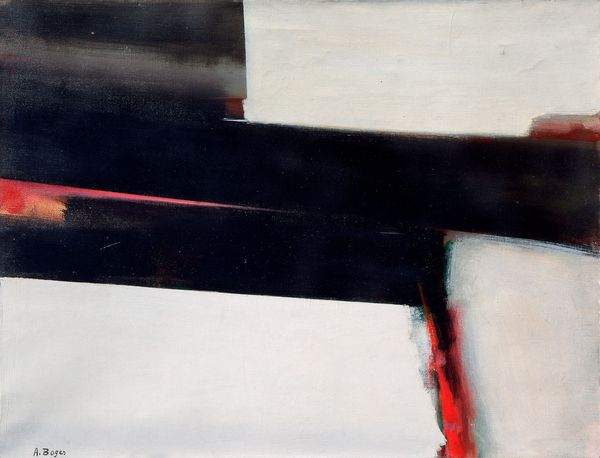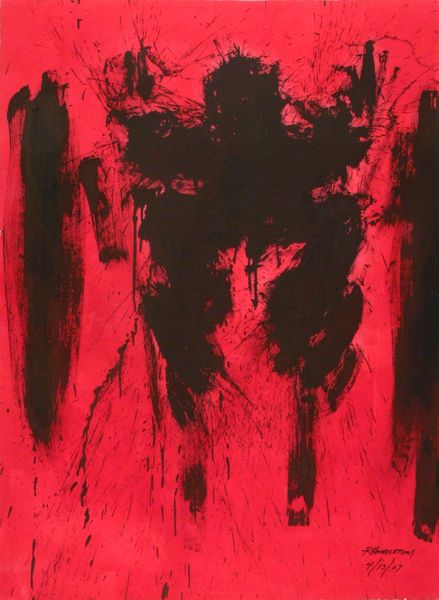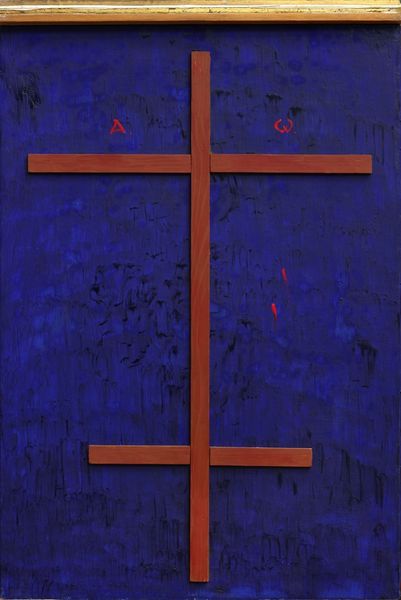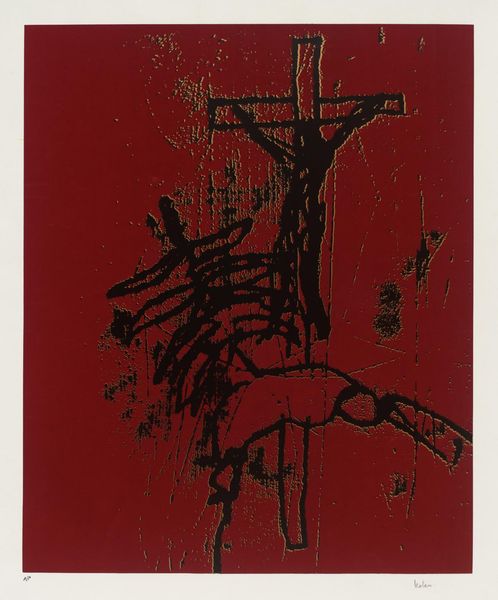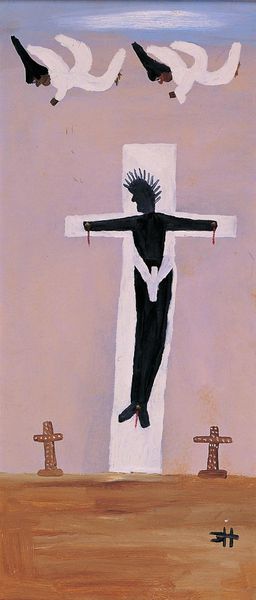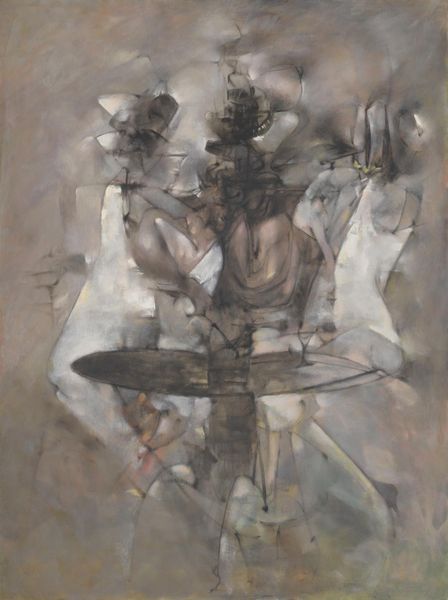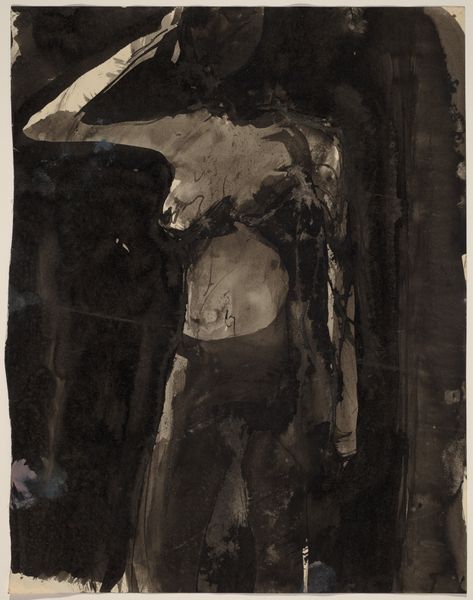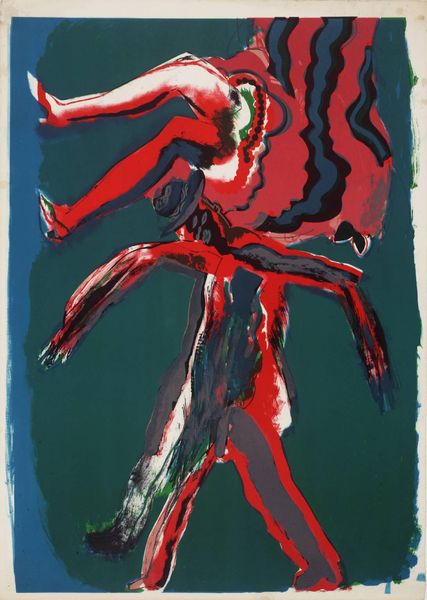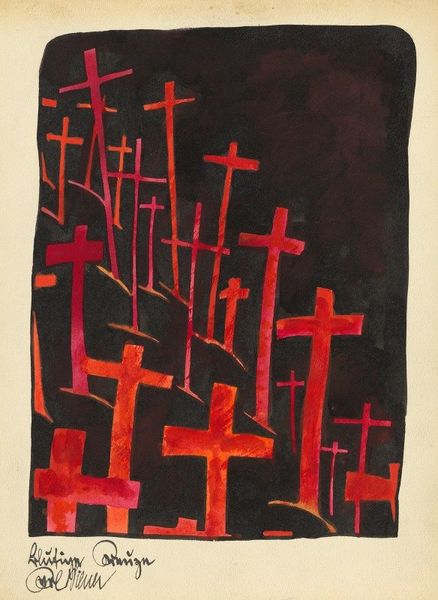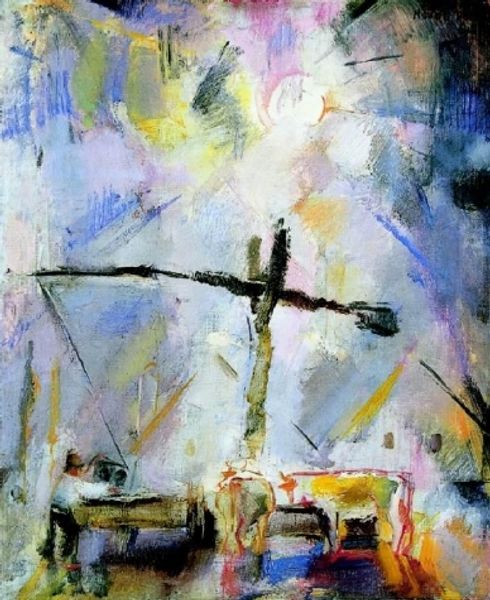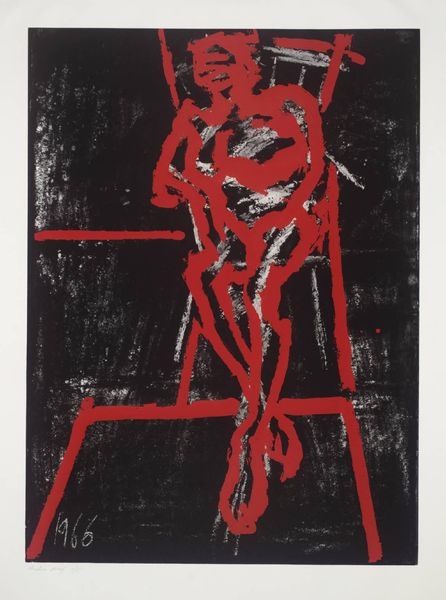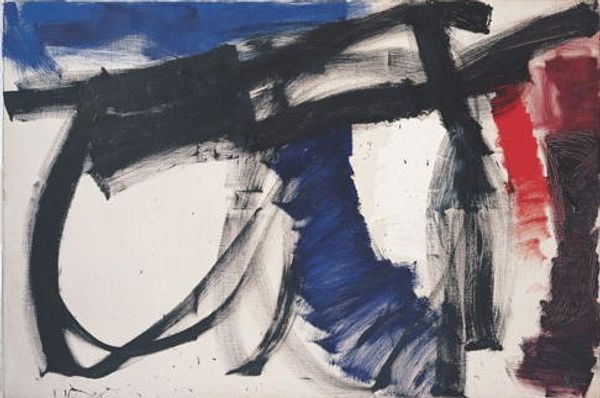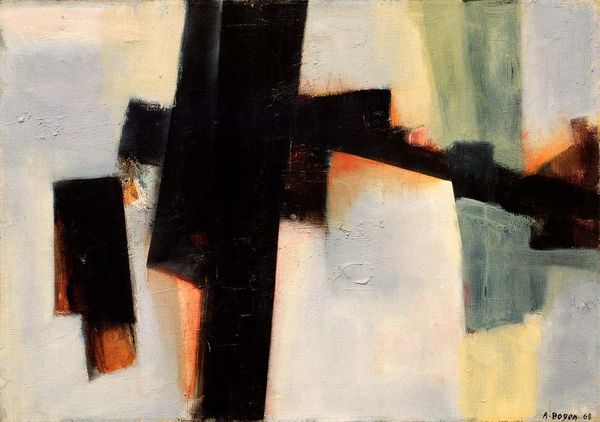
Copyright: Gebre Kristos Desta,Fair Use
Curator: This is Gebre Kristos Desta’s "Gologotha," painted in 1963, employing oil paint to express a deeply evocative scene. What are your immediate impressions? Editor: Bleak and violent. That slashing red figure dominates a very muted, almost suffocating grey background. It certainly evokes suffering and turmoil. I am very curious about the artist's materials in relationship to such an evocative subject matter. Curator: Well, it is crucial to remember that Desta, as an Ethiopian intellectual, created this work in a period of immense social and political change. "Gologotha" should not simply be read through a religious lens. Rather, it might symbolize the personal and collective trauma inflicted by oppressive power structures. That stark red figure becomes a representation of resistance against such oppression, specifically the social unrest during Emperor Haile Selassie's reign. Editor: Interesting take. And how might Desta’s technique play into this reading? The loose, almost violent brushstrokes that create the figure... are those gestures also indicative of something? A struggle in its creation? What choices did the artist make about the materials used? The red pops—in striking juxtaposition with the muted palette—and suggests that oil paints offered Desta a particular vehicle to embody something about the nature of the work that cannot be divorced from his lived experience. Curator: Absolutely. This Expressionistic approach certainly enhances the raw emotion of the scene, aligning with the personal and existential themes Desta often explored. The artist used figuration as a powerful tool for representing human struggles with an intense engagement of the viewer that invites empathy and prompts critical inquiry into the narrative's historical and social roots. Editor: And to think about the act of creation, this interplay, of resistance in the face of such turmoil seems, to me, like the key component for viewing the work within a historical framework and it becomes as powerful of a lens as the content in question. The labor of art mirroring a broader one. Curator: This helps us engage meaningfully with art history, considering the nuances of political, social, and personal layers that intersect. Editor: By observing Desta's unique, embodied making of the artwork through the lens of that intersectionality you provided us. Thanks for unveiling "Gologotha" for me with its unique dialogue that allows its narrative of trauma and transformation to resonate far beyond its visual impact.
Comments
No comments
Be the first to comment and join the conversation on the ultimate creative platform.
